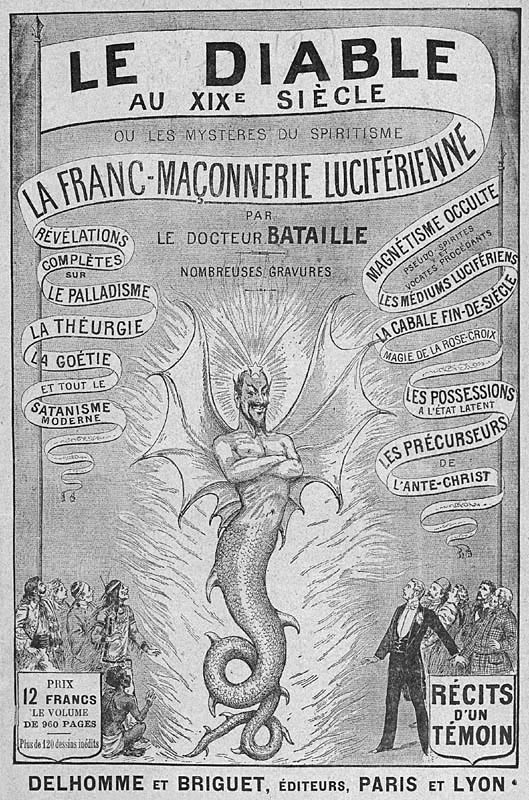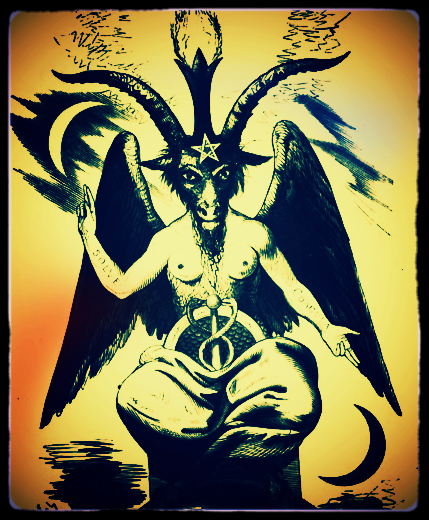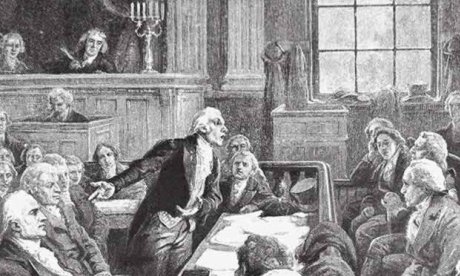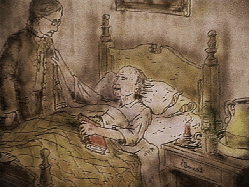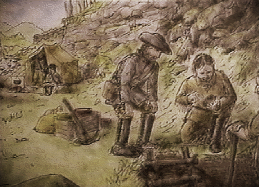Blind Spot: Three Men Gone from Eilean Mor, the Missing Keepers of the Flannan Isles Light
Steeped as it is in folklore and mummery, I feel I must first tell the story of the Great Lighthouse Mystery as it is most often received, as something of a scary campfire tale, before illuminating it with the light of scholarship and skepticism, as this is a tale of the darkness that reigns when a guiding light is left untended. Thus, we may begin with the reports of December 15, 1900, when in the dangerous waters of the Outer Hebrides, two ships, the Fairwind and the Archtor, expecting to see the 140,000 candle-power warning light shining from the lighthouse atop the 150-foot cliffs of Eilean Mór, the largest of the craggy Flannan Isles, saw instead only darkness. And in that darkness, as some have told it, the crew of the Fairwind saw some ragged men like specters rowing a boat toward the benighted isle. While the Fairwind appears not to have reported the extinguished light, the Archtor eventually did, upon finally arriving at Leith port after considerable delay. The Archtor had bottomed out on a rock and taken on water; her captain had to beach and lighten her before she could make it into port. This delay, as well as a further 10-day delay on the part of the Archtor’s agents to report the outage of the light and a failure on the part of the Northern Lighthouse Board’s lookout to note and report the problem himself, meant that no one was aware of anything out of the ordinary on Eilean Mór until the Hesperus, the NLB lighthouse tender, arrived on December 26th, Boxing Day, with supplies and relief. On board was Joseph Moore, a lighthouse keeper coming off his two weeks’ leave. When the Hesperus came close enough to sight the lighthouse and saw no signal flag, it blew its steam whistle and fired a rocket, neither of which elicited any response from above.
Moore was dispatched with the second mate and a third sailor in a longboat that docked at the small landing carved into the rock at the base of Eilean Mór’s cliffs, and he left the crewmen behind then, climbing the steep, hand-carved steps up to the grassy embankment at the top and making his way past the ruins of an ancient chapel to the living quarters of the lighthouse keepers in his search for the three lighthouse keepers that had been alone on the island for weeks. One can imagine him shouting their names as he approached, James Ducat and Thomas Marshall—or perhaps Jim and Tom to Joseph Moore—and Donald MacArthur, the Occasional keeper who may not have been so well-known to him. He found the outer door closed, and through a passage, the inner door to the kitchen was shut as well. Inside, he found an unfinished meal of potatoes and salt-mutton, and an overturned chair. But it was not until he noticed that all the clocks had wound down and stopped that Joseph Moore became certain the lighthouse keepers had not been there for some time.
The hand-carved steps of Eilean Mor, via Wikimedia Commons
Hurrying back to the boat, he enlisted the other two men to help him search. In the lighthouse tower itself, they found the light was clean and full of fuel, as though well-tended to the very last. When this second search failed to turn up any sign of the keepers, they all returned to the Hesperus to report, whereupon Moore and three others were promptly dispatched back to the lighthouse to illuminate the night. The next day, Moore and the other replacement keepers searched the entire island for any indications of what had transpired there. At the west landing, which faced the vast open Atlantic, they discovered some evidence of severe weather. The rails of a steam-powered tramway, installed for hauling supplies up the cliff face, had been bent out of shape and dislodged from the rock by some powerful force, and a box of mooring ropes that should have been firmly anchored in a cleft of rock was simply gone. Then, back at the residence, they found a disturbing sign: a coat, still on its peg. Each of the missing lighthouse keepers had protective weather gear that he would not have ventured outside without wearing, especially in inclement weather—Ducat had his waterproof, Marshall his oilskins, and MacArthur, the Occasional, his wearing coat. It appeared that MacArthur’s wearing coat had been left behind, such that he must have gone out of doors in a state of undress.
Within a few days, the Superintendent of Lighthouses, Robert Muirhead, arrived to write his own report, and his investigation noted some further signs of foul weather having struck the island: a one-ton boulder had tumbled down the slope to rest on a concrete path, and along that same path, an emergency buoy had been somehow forcefully ripped from the railing, not as if by a man seeking to use it but rather as if by some brute and unthinking force, for it had left behind fragments of canvas. This damage was at 110 feet above sea level, a fact that would prove troublesome to some theories as they developed.
And finally, an important piece of evidence was the lighthouse log, in which the keepers kept dated track of weather and sea conditions as well as anything the Northern Lighthouse Board might need recorded. The last entry was dated December 15th, the very day that passing vessels had first noticed the lighthouse was dark. Much has been written about these final log entries in the years since, as interest in the Great Lighthouse Mystery has evolved, for in some ways, as we have received them, they appear to be odd and foreboding. On the 12th of December, Marshall writes about a storm the likes of which he’s never seen, and mentions in passing how quiet Ducat was and how MacArthur had been crying. Then on the 13th, he makes sure to put down that all three of them took to prayer, such was their disquiet and dread. Then, on the 15th, he notes that the weather has calmed, stating cryptically, “God is over all.”
From left: Donald MacArthur, Thomas Marshall, James Ducat, and Robert Muirhead, via Hushed Up History
As the legend of Eilean Mór grew, so did the theories of what transpired there proliferate. The most common of these, and still the most believable, have to do with poor weather somehow sweeping the three lighthouse keepers into the sea, whether by wave or by wind. However, in later years, reports of the mysterious log entries—which seemed to indicate that weather could not have been the culprit, having calmed before their disappearance—have led to speculation of supernatural or paranormal explanations. So, if it had not been weather, perhaps it was aliens? Because that’s the next logical jump, right? Or perhaps we should remain grounded in history and look at the lore surrounding the island itself. The only former inhabitant of Eilean Mór was St. Flannan, a Celtic monk who according to legend had miraculously floated to Rome on a rock to be consecrated, was known to pronounce curses on robber-barons, and on account of a prophecy that he might become a monarch, asked God to miraculously disfigure his face in order to avoid kingship, which prayer the Lord supposedly answered. The ruins of this saint’s chapel remained, and the lighthouse keepers passed it by daily. Perhaps, then, the keepers offended the spirit of St. Flannan, and the monk showed his scarred face once more to curse the men.
Then again, the history of the isles extends back much further than the 7th century. According to folklore recorded in the 17th century by Martin Martin, the island had once been home to the Losbirdan, people of low-stature whose little bones had been discovered in the soils there. Some have turned these legends of small folk into talk of mischievous elves or spirits of dead sprites who might have acted in some impish way on the men. Regardless of the accuracy of this interpretation of the lore, though, it can’t be argued that superstition surrounded the island. Martin recorded a number of strange traditions followed by those few who visited the islands to gather eggs and down from the nests of sea birds. They believed they had to have an easterly wind in order to approach the island, as a westerly wind was a fell omen. Upon passing the ruins of St. Flannan’s chapel, they stripped to the waist, placed their upper clothes on the altar and prayed three times. And while fowling on the island, they felt they must avoid using certain common words, relying instead on synonyms or alternate nouns. Whether these men feared retribution from St. Flannan or the little Losbirdan is unclear, but it’s almost certain that the lighthouse men failed to follow these ancient precautions. Could it therefore be that they incurred the wrath of something that had lain dormant on the island for centuries? So go the fanciful theories of ghost story enthusiasts, at least….
The problem is that most of the evidence pointing to anomalous goings-on has proven unreliable. First, the unusual log entries that supposedly prove weather could not have caused the three men’s disappearance: Fortean Times contributor Mike Dash, in a very well-researched paper that has served as my principal source for this episode, scoured contemporary sources and found no evidence of such entries. Moreover, he shows how illogical they are, containing chronological errors, being kept by only one lighthouse keeper and not the lead keeper, and noting things that wouldn’t belong in the log, such as melodramatic language and petty observations on the other men’s behavior. Moreover, the log entries don’t seem to have appeared until years after the fact, not so much as a hoax but more as a dramatic embellishment added by one author who thought it made for a better story, and thereafter picked up and included in other renditions. This is how history becomes mythologized, and it seems to have happened in this story in more than one regard. For example, the entire story of the Fairwind spying pale and ragged men working the oars of a lifeboat and heading for the island on the 15th also seems to be apocryphal, as it only appears in a few less than reliable sources. And again, Dash proves that the entire element of the unfinished meal appears to have been fabricated and added to the story somewhere along the way, as he digs up contemporary reports that show the kitchen was clean and tidy, and that indeed a chair may not have even been overturned as so often gets included in the tale. The same, he points out, is true of the Mary Celeste, whose myth grew to include a fictional abandoned meal, as though the diners had vanished mid-victuals. It’s enough to make one doubt reports of the ribs and pea soup in the Carroll A. Deering tale.
The Flannan Isles Light, via Wikimedia Commons
However, the unusual details that the Occasional keeper, MacArthur, had left his wearing coat on the peg and that the outer and inner doors of the living quarters had been found shut remain problematic. There are a few remaining theories, but these facts trouble all of them. First, weather: disregarding the dubious log entries, there may well have been a violent squall at the island. It would be unusual for the men to have gone out in such weather at all, but as Dash points out, lighthouse keepers could be docked pay for being so careless as to lose equipment, and Ducat and Marshall may have donned their weather gear and gone out to secure the box of ropes which later turned up missing. Then either a gale-force wind or a great rogue wave threatened to take them, and seeing that they were in danger or hearing their cries for help, MacArthur rushed out in his shirtsleeves to help them, whereupon all three had been swept away. The problem with that theory, however, is that MacArthur rushed out without his coat but still had the presence of mind to shut every door behind him as he went.
And there are other problems with the theories of a gust of wind or a wave taking the men. Some have claimed that, considering the wind’s direction at the time, they would have been blown up the grassy slope, not into the sea. That leaves rogue waves, which, some will argue, are not known to reach such a height that they could wash the men into the sea. There was, however, hard evidence of damage at as high as 110 feet on the island, for the buoy had been violently torn from the path’s handrail. While open ocean waves aren’t known to reach that height, it remains a possibility that local conditions among the rocks and cliffs of the island somehow contributed to the creation of a monster wave. For example, one Christopher Nicholson has pointed out that the geos, or narrow gullies, along the coastline could channel the crashing sea into gargantuan waves.
Others, likely encouraged by the mythical log entries and rejecting weather as the cause altogether, have theorized that the Occasional, MacArthur, went stir crazy or came to resent the other two keepers, and simply snapped, leaving his coat and going out to attack the men; whereupon he shoved them over into the sea and fell with them during the struggle. There is no real evidence for this rendition, though. The man was a 40-year-old former soldier with a wife back on the mainland. If any of them might have snapped, one would think it might have been the unmarried, 28-year-old Marshall.
Then there are other theories: perhaps they were taken off the island by a ship, perhaps by the secret service or foreign agents. But a weather disaster remains the most viable. Mystery indeed persists, but to me, it seems boiled down to a matter of a coat on a peg and some shut doors. What could have compelled MacArthur to go out of doors without any protection from the weather? Whatever the reason, it must have been something that caused him to run out in a mad rush, which doesn’t correspond with the fact that doors had been neatly shut behind him. So in the end, we don’t really know what happened that day on Eilean Mór, an island that is essentially just the tip of a massive undersea mountain, and so, as far as we know, the disappearance of these three men itself may be just the visible tip of much larger story that is hidden from our view by the murky waters of the Atlantic. And just like ships passing the darkened lighthouse in December of 1900 expected a spotlight to illuminate their way but were instead engulfed in shadows, so too we, looking back on the Flannan Isles Lighthouse Mystery, find ourselves floating helplessly in the darkness of a historical blind spot.





























